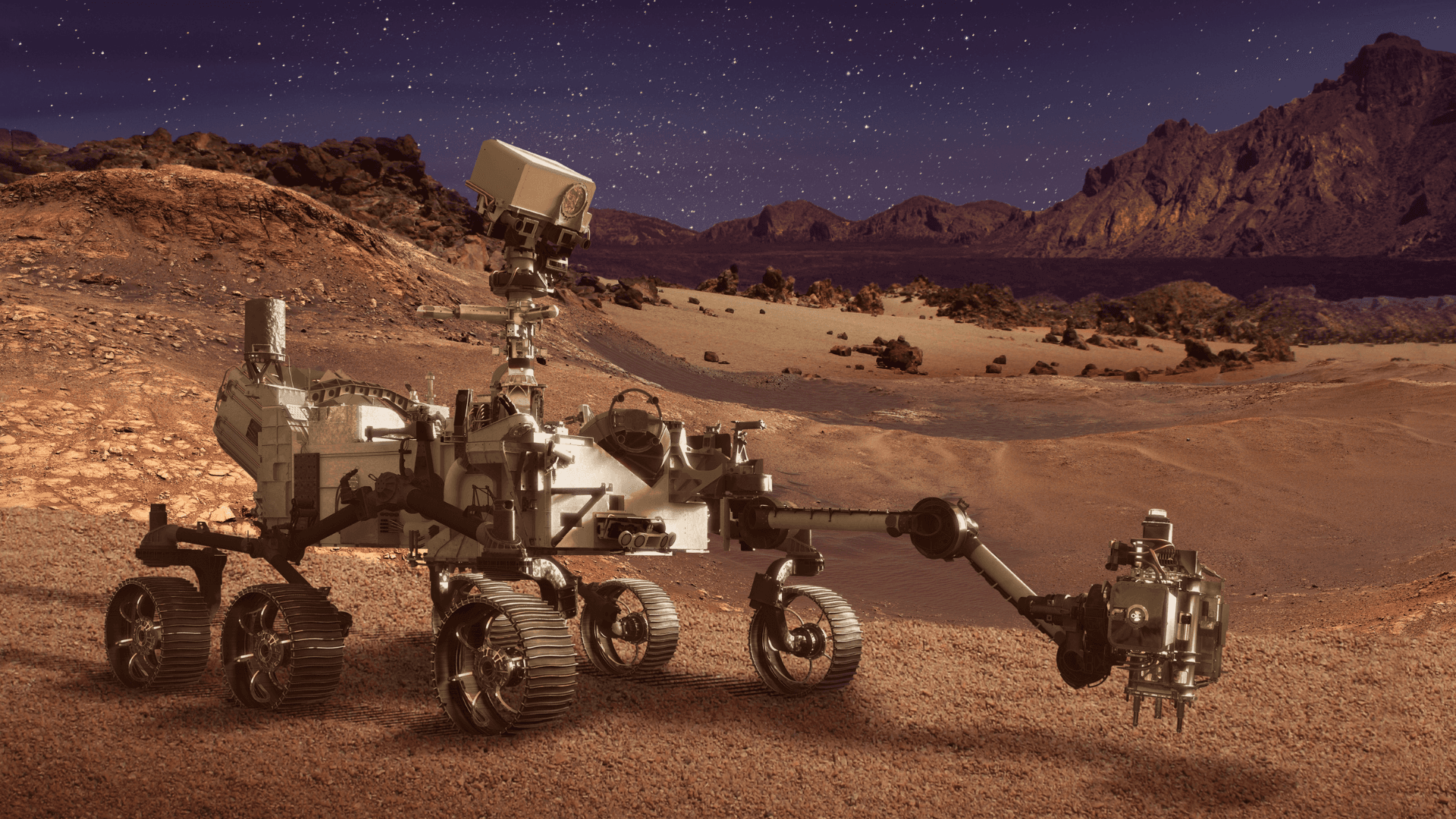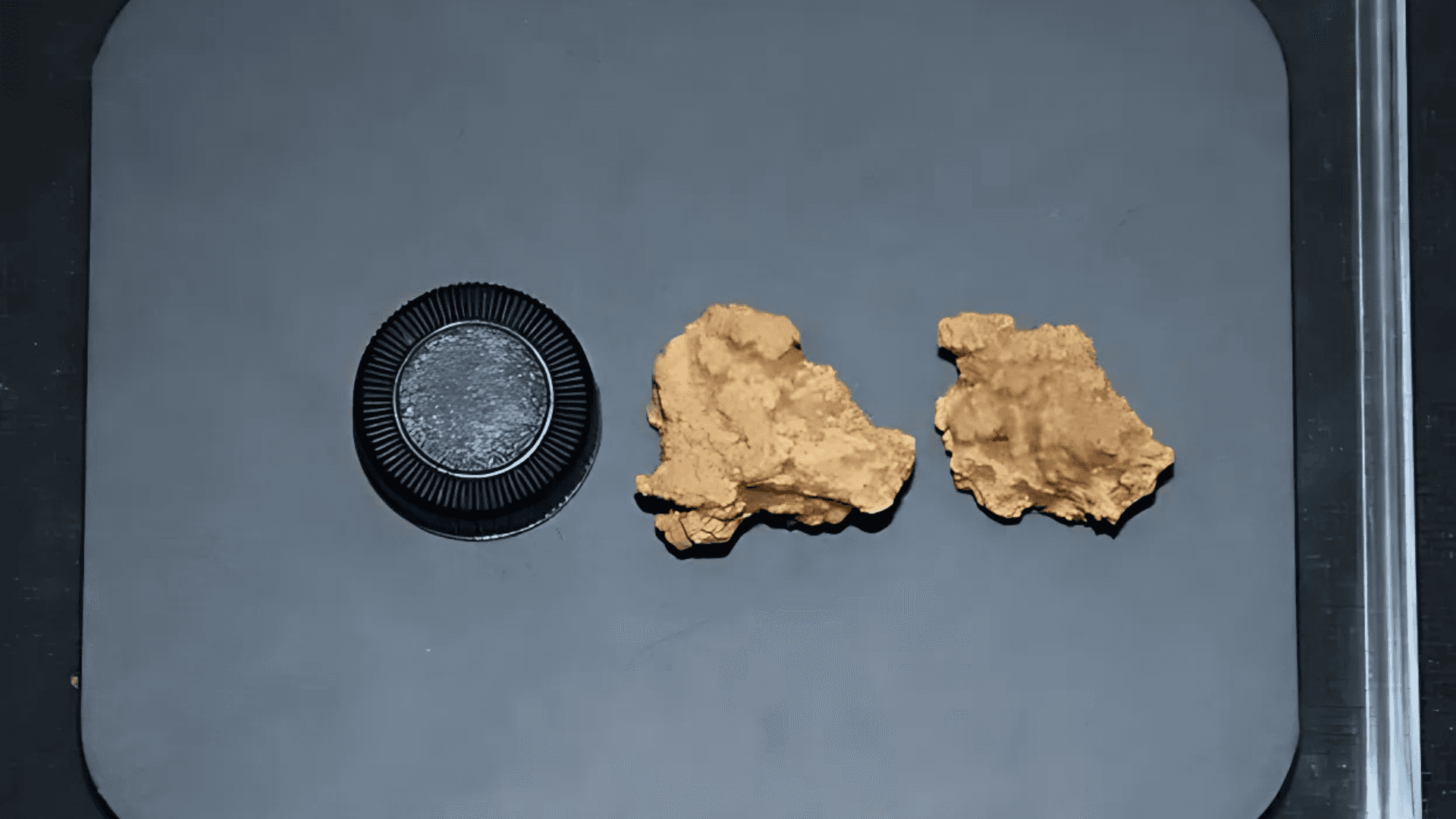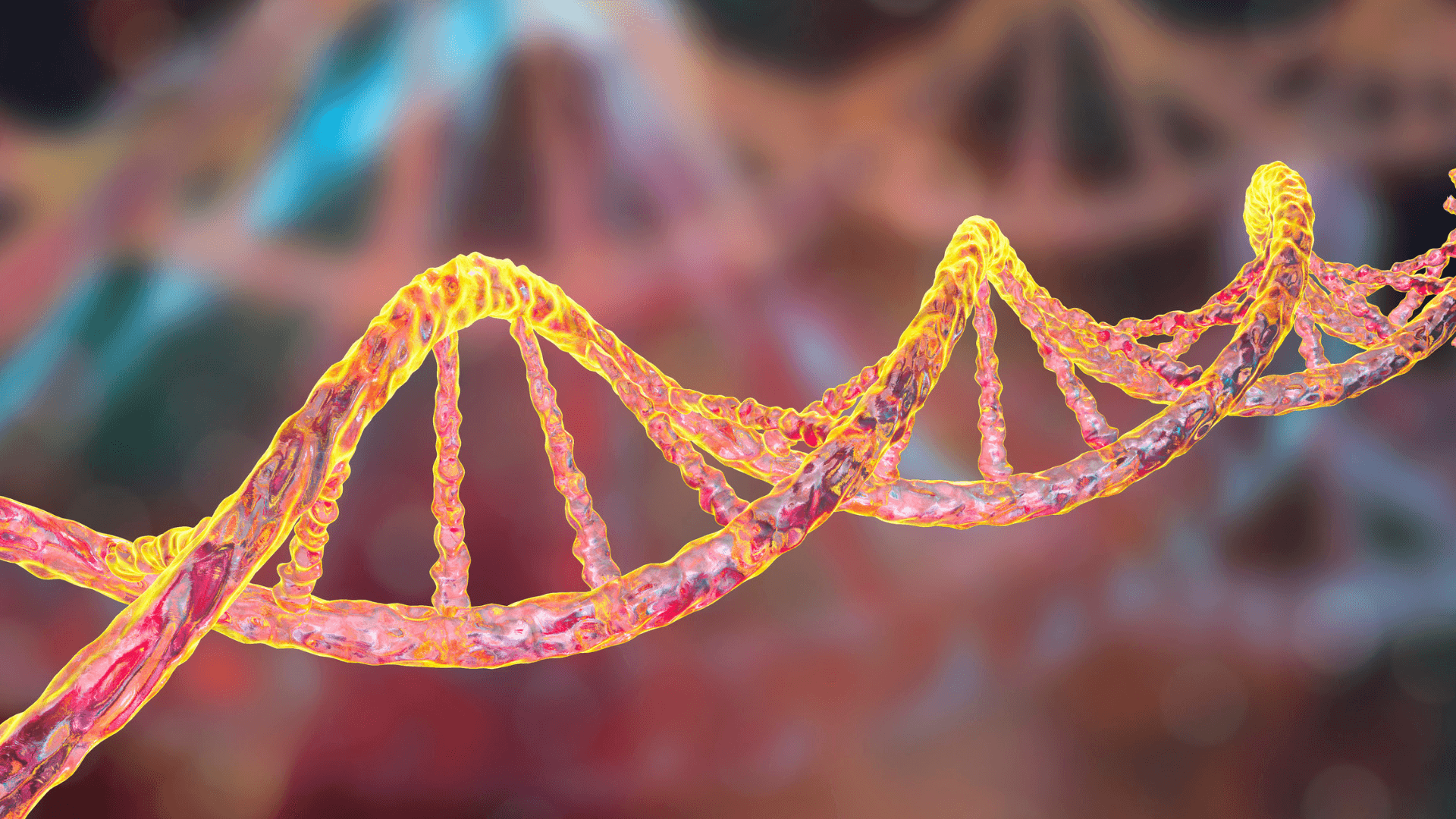Revolution XRISM: New Discoveries About Supermassive Black Holes
Revolution XRISM: New Discoveries About Supermassive Black Holes
Revolution XRISM: New Discoveries About Supermassive Black Holes
Oct 15, 2024
Oct 15, 2024
Oct 15, 2024

Black hole in universe. Credit: Getty Images via Canva.
Black hole in universe. Credit: Getty Images via Canva.
Black hole in universe. Credit: Getty Images via Canva.
The XRISM mission has significantly improved our understanding of supermassive black holes through notable advancements. Discover how new X-ray data reveal unprecedented details about accretion disks and gas loss in black holes.
The XRISM mission has significantly improved our understanding of supermassive black holes through notable advancements. Discover how new X-ray data reveal unprecedented details about accretion disks and gas loss in black holes.
The XRISM mission has significantly improved our understanding of supermassive black holes through notable advancements. Discover how new X-ray data reveal unprecedented details about accretion disks and gas loss in black holes.
The XRISM (X-Ray Imaging and Spectroscopy Mission) has significantly advanced our understanding of supermassive black holes by revealing unprecedented details about these enigmatic cosmic objects. By collecting high-resolution X-ray spectra, the mission deepens our knowledge of the environments surrounding black holes, opening new frontiers in astrophysics.
Accretion Disks More Complex Than Imagined
One of XRISM's most impressive discoveries is the confirmation that accretion disks—composed of gas and dust orbiting black holes—are far more complex than previously thought. Rather than being flat, these disks are distorted with thicker outer edges. XRISM provided the strongest evidence yet of these deformations, offering a new perspective on the material dynamics near black holes.
Tracing Gas Loss in Black Holes
Beyond mapping accretion disk structures, XRISM investigates how black holes lose gas. While earlier theories posited that significant amounts of gas escape from the disks, XRISM observes this process in detail. For the first time, scientists can track the fate of this escaping matter, gaining a better understanding of the cycle of matter and energy around supermassive black holes.
XRISM Fills Critical Observational Gap
XRISM contributes to bridging a significant gap in astronomical observations. It enables the study of black holes on small scales and their effects on entire galaxies, covering an impressive range of five orders of magnitude. This extensive coverage is vital for comprehending how gas flow around black holes influences galactic evolution.
Advanced Technology and Cutting-Edge Spectroscopy
Central to the XRISM mission is the "Resolve" microcalorimeter, a cutting-edge instrument offering energy resolution ten times greater than its predecessors. This technological leap enables researchers to precisely analyze the energies of X-rays emanating from the surroundings of black holes, mapping these mysterious and turbulent environments in unprecedented detail.
Building on Previous Missions
Building on the achievements of previous missions like Chandra and Hitomi, XRISM surpasses their limitations. It provides vital data for black hole research by combining past successes with solutions to earlier challenges.
First Results Surprise Researchers
The initial data from XRISM have astonished scientists. The early findings offer groundbreaking insights, and the level of detail achieved surpasses the team's expectations. By addressing a longstanding gap in black hole research, XRISM provides data that promises to revolutionize our understanding of these extreme cosmic regions for years to come.
This mission inaugurates a new era in the study of black holes, with the potential to answer fundamental questions about the behavior and effects of these enigmatic entities in the cosmos.
—
Understand how the XRISM mission is changing astrophysics with unprecedented discoveries about black holes. Read more about this study here.
The XRISM (X-Ray Imaging and Spectroscopy Mission) has significantly advanced our understanding of supermassive black holes by revealing unprecedented details about these enigmatic cosmic objects. By collecting high-resolution X-ray spectra, the mission deepens our knowledge of the environments surrounding black holes, opening new frontiers in astrophysics.
Accretion Disks More Complex Than Imagined
One of XRISM's most impressive discoveries is the confirmation that accretion disks—composed of gas and dust orbiting black holes—are far more complex than previously thought. Rather than being flat, these disks are distorted with thicker outer edges. XRISM provided the strongest evidence yet of these deformations, offering a new perspective on the material dynamics near black holes.
Tracing Gas Loss in Black Holes
Beyond mapping accretion disk structures, XRISM investigates how black holes lose gas. While earlier theories posited that significant amounts of gas escape from the disks, XRISM observes this process in detail. For the first time, scientists can track the fate of this escaping matter, gaining a better understanding of the cycle of matter and energy around supermassive black holes.
XRISM Fills Critical Observational Gap
XRISM contributes to bridging a significant gap in astronomical observations. It enables the study of black holes on small scales and their effects on entire galaxies, covering an impressive range of five orders of magnitude. This extensive coverage is vital for comprehending how gas flow around black holes influences galactic evolution.
Advanced Technology and Cutting-Edge Spectroscopy
Central to the XRISM mission is the "Resolve" microcalorimeter, a cutting-edge instrument offering energy resolution ten times greater than its predecessors. This technological leap enables researchers to precisely analyze the energies of X-rays emanating from the surroundings of black holes, mapping these mysterious and turbulent environments in unprecedented detail.
Building on Previous Missions
Building on the achievements of previous missions like Chandra and Hitomi, XRISM surpasses their limitations. It provides vital data for black hole research by combining past successes with solutions to earlier challenges.
First Results Surprise Researchers
The initial data from XRISM have astonished scientists. The early findings offer groundbreaking insights, and the level of detail achieved surpasses the team's expectations. By addressing a longstanding gap in black hole research, XRISM provides data that promises to revolutionize our understanding of these extreme cosmic regions for years to come.
This mission inaugurates a new era in the study of black holes, with the potential to answer fundamental questions about the behavior and effects of these enigmatic entities in the cosmos.
—
Understand how the XRISM mission is changing astrophysics with unprecedented discoveries about black holes. Read more about this study here.
The XRISM (X-Ray Imaging and Spectroscopy Mission) has significantly advanced our understanding of supermassive black holes by revealing unprecedented details about these enigmatic cosmic objects. By collecting high-resolution X-ray spectra, the mission deepens our knowledge of the environments surrounding black holes, opening new frontiers in astrophysics.
Accretion Disks More Complex Than Imagined
One of XRISM's most impressive discoveries is the confirmation that accretion disks—composed of gas and dust orbiting black holes—are far more complex than previously thought. Rather than being flat, these disks are distorted with thicker outer edges. XRISM provided the strongest evidence yet of these deformations, offering a new perspective on the material dynamics near black holes.
Tracing Gas Loss in Black Holes
Beyond mapping accretion disk structures, XRISM investigates how black holes lose gas. While earlier theories posited that significant amounts of gas escape from the disks, XRISM observes this process in detail. For the first time, scientists can track the fate of this escaping matter, gaining a better understanding of the cycle of matter and energy around supermassive black holes.
XRISM Fills Critical Observational Gap
XRISM contributes to bridging a significant gap in astronomical observations. It enables the study of black holes on small scales and their effects on entire galaxies, covering an impressive range of five orders of magnitude. This extensive coverage is vital for comprehending how gas flow around black holes influences galactic evolution.
Advanced Technology and Cutting-Edge Spectroscopy
Central to the XRISM mission is the "Resolve" microcalorimeter, a cutting-edge instrument offering energy resolution ten times greater than its predecessors. This technological leap enables researchers to precisely analyze the energies of X-rays emanating from the surroundings of black holes, mapping these mysterious and turbulent environments in unprecedented detail.
Building on Previous Missions
Building on the achievements of previous missions like Chandra and Hitomi, XRISM surpasses their limitations. It provides vital data for black hole research by combining past successes with solutions to earlier challenges.
First Results Surprise Researchers
The initial data from XRISM have astonished scientists. The early findings offer groundbreaking insights, and the level of detail achieved surpasses the team's expectations. By addressing a longstanding gap in black hole research, XRISM provides data that promises to revolutionize our understanding of these extreme cosmic regions for years to come.
This mission inaugurates a new era in the study of black holes, with the potential to answer fundamental questions about the behavior and effects of these enigmatic entities in the cosmos.
—
Understand how the XRISM mission is changing astrophysics with unprecedented discoveries about black holes. Read more about this study here.
Compartilhar em:
Compartilhar em:

DeepSeek AI: o chatbot chinês que está sacudindo o mercado global
Feb 7, 2025

Estudo revela que a vida social ativa pode reduzir o risco de demência
Feb 4, 2025

Ano Novo Lunar 2025: a chegada do Ano da Serpente
Jan 30, 2025

Nova hipótese sobre a origem dos dinossauros desafia conceitos tradicionais
Jan 27, 2025

Ambiente potencialmente habitável em Marte é descoberto pelo Perseverance
Dec 20, 2024

As emoções e o corpo humano: conexões milenares nos textos neo-assírios
Dec 20, 2024

Estudo relaciona poluição do ar ao risco de tromboembolismo venoso
Dec 20, 2024

Colapso da plataforma de gelo Conger: alerta para a Antártica Oriental
Dec 20, 2024

Revolução XRISM: novas descobertas sobre buracos negros supermassivos
Oct 15, 2024

Estudo aponta que duplicação do gene AMY1, relacionado à digestão de amido, precede a agricultura
Oct 14, 2024

Nascimentos na UE caem para menos de 4 milhões pela primeira vez desde 1960
Oct 11, 2024

Escavação na Dinamarca revela 50 esqueletos Viking incrivelmente preservados
Oct 10, 2024

Estudo indica maior incidência de asma e rinite alérgica em pessoas nascidas no outono e inverno na Finlândia
Oct 9, 2024

Estudo demonstra semelhanças entre a puberdade de adolescentes da Idade do Gelo e jovens modernos
Oct 8, 2024

Análise de DNA em múmias chinesas de 3.600 anos revela queijo mais antigo do mundo
Oct 7, 2024

Estudo revela estabilidade genética de populações da África Austral por 10 milênios
Oct 4, 2024

Nove lugares míticos que podem ter existido, segundo descobertas arqueológicas
Oct 3, 2024

Como os direitos humanos podem salvar recifes de coral e responsabilizar governos
Oct 2, 2024

Relatório da Carbon Brief aponta que 2024 pode ser o ano mais quente da história
Sep 4, 2024

Clima determina a distribuição de mamíferos, revela estudo da Universidade Estadual da Carolina do Norte
Sep 4, 2024
Ver Também
Ver Também
Ver Também
Ver Também

DeepSeek AI: o chatbot chinês que está sacudindo o mercado global
Feb 7, 2025

Estudo revela que a vida social ativa pode reduzir o risco de demência
Feb 4, 2025

Ano Novo Lunar 2025: a chegada do Ano da Serpente
Jan 30, 2025

Nova hipótese sobre a origem dos dinossauros desafia conceitos tradicionais
Jan 27, 2025

Ambiente potencialmente habitável em Marte é descoberto pelo Perseverance
Dec 20, 2024

As emoções e o corpo humano: conexões milenares nos textos neo-assírios
Dec 20, 2024

Estudo relaciona poluição do ar ao risco de tromboembolismo venoso
Dec 20, 2024

Colapso da plataforma de gelo Conger: alerta para a Antártica Oriental
Dec 20, 2024

Revolução XRISM: novas descobertas sobre buracos negros supermassivos
Oct 15, 2024

Estudo aponta que duplicação do gene AMY1, relacionado à digestão de amido, precede a agricultura
Oct 14, 2024

Nascimentos na UE caem para menos de 4 milhões pela primeira vez desde 1960
Oct 11, 2024

Escavação na Dinamarca revela 50 esqueletos Viking incrivelmente preservados
Oct 10, 2024

Estudo indica maior incidência de asma e rinite alérgica em pessoas nascidas no outono e inverno na Finlândia
Oct 9, 2024

Estudo demonstra semelhanças entre a puberdade de adolescentes da Idade do Gelo e jovens modernos
Oct 8, 2024

Análise de DNA em múmias chinesas de 3.600 anos revela queijo mais antigo do mundo
Oct 7, 2024

Estudo revela estabilidade genética de populações da África Austral por 10 milênios
Oct 4, 2024

Nove lugares míticos que podem ter existido, segundo descobertas arqueológicas
Oct 3, 2024

Como os direitos humanos podem salvar recifes de coral e responsabilizar governos
Oct 2, 2024

Relatório da Carbon Brief aponta que 2024 pode ser o ano mais quente da história
Sep 4, 2024

Clima determina a distribuição de mamíferos, revela estudo da Universidade Estadual da Carolina do Norte
Sep 4, 2024